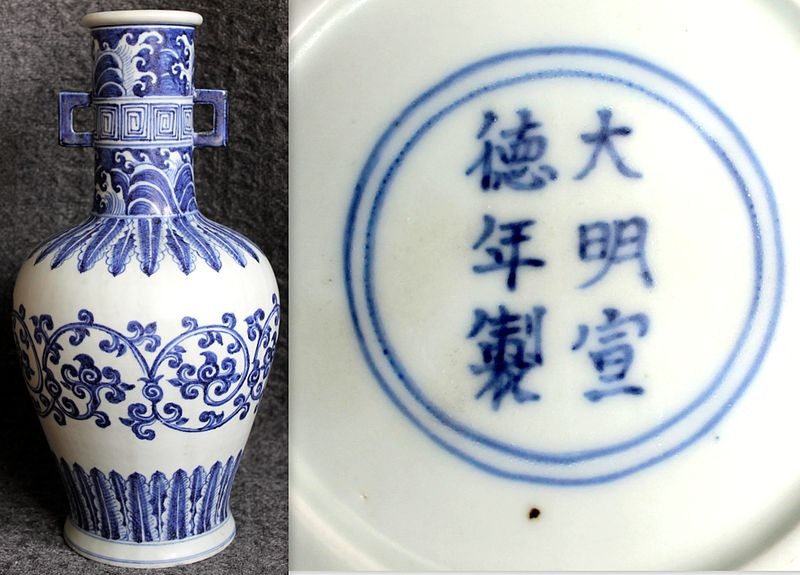Sometimes, a product becomes inextricably linked to the region that created it. Hence, sparkling wine from the Champagne region of France is known as ‘Champagne’, the town of Cheddar in England is famous for its cheese, and Paisley in Scotland is well known for producing the pattern of the same name (despite it originating in India or Persia).
In this case, Chinese porcelain is so highly regarded that all porcelain is commonly referred to as ‘china’ around the English-speaking world.
However, even among the finest Chinese porcelain, one name stands head and shoulders above the rest, becoming synonymous with refinement, artistry, and almost incalculable value; the Ming Dynasty.
But why is Ming china, particularly its splendid vases, so expensive?
To answer this question, we must understand a little about both Chinese and European history.

The Ming Dynasty ruled China from 1368 to 1644. This was a period of unprecedented prosperity, advancement, and population growth for the country. The dynasty’s achievements include building the famed Great Wall of China, and the publishing of books and the widespread practice of reading, even among the poor. At the time, China was the world’s largest economy. With this newfound prosperity came a greater-than-ever demand for finely made objects, including porcelain.
Trade with other countries was also booming during the period. This was the first period wherein Chinese porcelain began to be sold to Europe in significant quantities (first to Portugal, then Holland, and later England). The beautifully patterned and ornamental Chinese porcelain contrasted sharply with the often dull, functional pottery common to Europe at the time. Soon, Chinese pottery was considered to be a status symbol.
Inevitably, Europeans began to imitate Chinese designs, which became a basic template for pottery design and decoration that continues to this day.
Ming-era pottery was also clearly marked with what are called ‘reign marks’, allowing collectors to ascertain the approximate date of the piece’s creation, as well as who made it and for whom. This can be seen as analogous to the autographed paintings sought by European art collectors at around the same period. Works by notable craftsmen could therefore fetch higher sums of money.
In summary, Ming-era porcelain is emblematic of both a prosperous period in Chinese history, as well as being part of the artistic and cultural history of Europe, in addition to serving as a status symbol.
However, these are not the only reasons for the high value of Ming Dynasty vases and other pottery. The later Qing Dynasty would produce far more pottery (and, thanks to improved technology, higher quality pieces) than the Ming Dynasty, and would trade more extensively with the rest of the world. In fact, when most people think of Ming porcelain, they are more than likely picturing Qing porcelain.
The reason that Ming-era porcelain was still more highly regarded is simple; it was rarer. In Europe, and other markets, Ming Dynasty items were vastly outnumbered by the influx of more easily available Qing-era products. Through their relative scarcity, Ming-era works became more valuable.
Ironically, many prized Ming Dynasty items are, in fact, faithful copies from later eras. Featuring ‘apocryphal marks’, these pieces were created not to deceive collectors, but to pay homage to earlier artisans. In addition to fooling many collectors over the years, the search for genuine Ming Dynasty items among scores of imitations has probably fuelled speculation as much as any other factor.
Ming Dynasty vases represent exquisite craftsmanship, as well as being hundreds of years old. They are beautiful to behold, difficult to identify, and even harder to obtain, all factors that will add to the price if you are trying to purchase one.
Perhaps surprisingly, a list of the most expensive vases ever sold features only 2 Ming vases, with the majority dating from the 18th century Qing Dynasty. However, a Ming vase sold for £14M in 2011 (smashing the previous auction record in Hong Kong). This shows that the appeal of Ming porcelain has never diminished.
Ming Dynasty vases are typically less ornate and well made than their Qing Dynasty counterparts, but their place in history, combined with their relative scarcity, and incredible artistry, continues to keep prices soaring.
The term ‘Ming vase’ refers as much to a style as it does to a specific item and era of production. Colloquially, it has become a byword for almost any impossibly expensive, difficult to obtain, one-of-a-kind item.
As a nation, China may be synonymous with fine porcelain, but the Ming Dynasty itself has become a synonym for high artistry, alluring rarity, and incalculable value.
